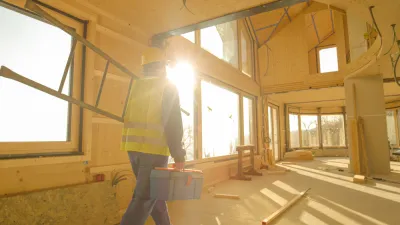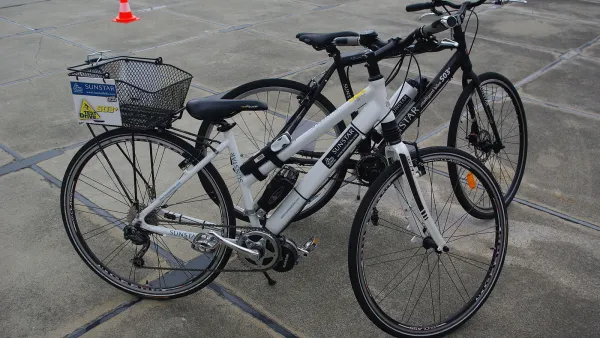Every component of a building, from the concrete foundation to the paint on the walls, has an impact on human health, the climate, and ecosystems around the globe. Building materials—once overlooked in real estate’s sustainability efforts—are now bei

Every component of a building, from the concrete foundation to the paint on the walls, has an impact on human health, the climate, and ecosystems around the globe. Building materials—once overlooked in real estate’s sustainability efforts—are now being recognized as key to achieving net zero carbon emission targets and delivering healthy places for tenants and communities.
For First United Bank, a regional bank headquartered in Durant, Oklahoma, choosing the right construction materials for its new branch locations became an important way for the company to outwardly express its people- and planet-focused values.
“First United wanted the buildings to integrate and showcase sustainable strategies while inspiring and relating to their customer base,” according to project architect, Taylor Coleman, a senior associate at Gensler. “Using mass timber proved to be an excellent way to achieve these goals.”
The inviting, light-filled lobby of First United Bank’s branch in Fredericksburg, Texas, is characterized by wood—lots of it. Completed in 2019, the 8,500-square-foot (790 sq m) building was the first fully mass timber structure in the state and the first project in the country to use cross-laminated timber (CLT) panels made from southern yellow pine, a locally grown and sourced wood.
Compared with traditional materials like concrete and steel, mass timber has a much lower environmental impact and has been shown to improve occupant health and well-being by evoking nature—a concept known as biophilia.
After completing the Fredericksburg branch, First United Bank and Gensler partnered on two additional mass timber bank buildings in Shawnee, Oklahoma, and Sherman, Texas. Gensler is now designing more than 2 million square feet (185,800 sq m) of mass timber buildings for Walmart’s new home office campus project in Bentonville, Arkansas, and working on Under Armour’s Baltimore global headquarters, another fully mass timber project.
These projects are representative of a larger industry trend favoring sustainable construction materials.
Over the last decade, this movement has mainly been championed by architecture and design firms, but real change will be possible only with coordinated efforts across the industry, says Diane Hoskins, Gensler’s co-CEO. “The decarbonization of the built environment is a complex challenge requiring the entire real estate sector to move toward low-carbon solutions.”
Spurred by increasingly restrictive regulations, reporting requirements, and growing demands from investors and tenants, the industry’s sustainability efforts are now taking materials into account.
An upcoming ULI report, The Material Movement: Creating Value with Better Building Materials, outlines the driving forces behind this shift and highlights key steps that developers and asset managers can take to mitigate their environmental impact and enhance health through building materials
FULL STORY: The Materials Movement: Advancing Low-Carbon, Healthy Materials for Sustainable Communities (ULI)

National Parks Layoffs Will Cause Communities to Lose Billions
Thousands of essential park workers were laid off this week, just before the busy spring break season.

Retro-silient?: America’s First “Eco-burb,” The Woodlands Turns 50
A master-planned community north of Houston offers lessons on green infrastructure and resilient design, but falls short of its founder’s lofty affordability and walkability goals.

Delivering for America Plan Will Downgrade Mail Service in at Least 49.5 Percent of Zip Codes
Republican and Democrat lawmakers criticize the plan for its disproportionate negative impact on rural communities.

Test News Post 1
This is a summary

Test News Headline 46
Test for the image on the front page.

Balancing Bombs and Butterflies: How the National Guard Protects a Rare Species
The National Guard at Fort Indiantown Gap uses GIS technology and land management strategies to balance military training with conservation efforts, ensuring the survival of the rare eastern regal fritillary butterfly.
Urban Design for Planners 1: Software Tools
This six-course series explores essential urban design concepts using open source software and equips planners with the tools they need to participate fully in the urban design process.
Planning for Universal Design
Learn the tools for implementing Universal Design in planning regulations.
EMC Planning Group, Inc.
Planetizen
Planetizen
Mpact (formerly Rail~Volution)
Great Falls Development Authority, Inc.
HUDs Office of Policy Development and Research
NYU Wagner Graduate School of Public Service





























